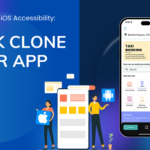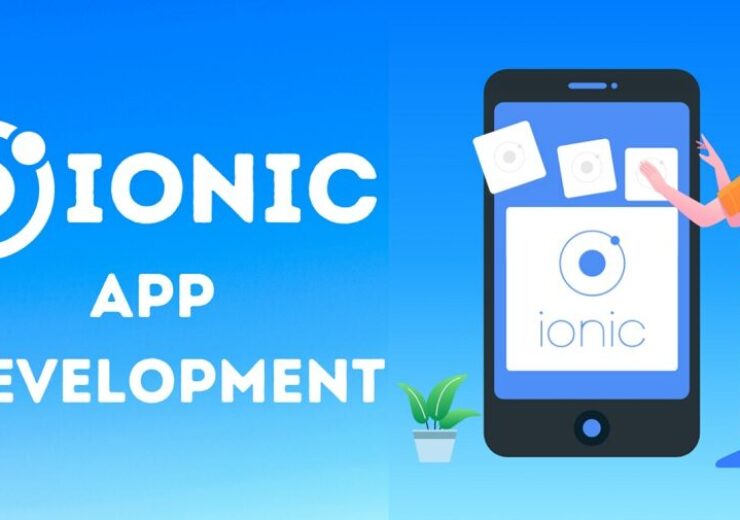Best 11 Optimization Tips to Improve Flutter App Performance

The past decade has seen the rise of countless apps worldwide. With advancements in technology and the widespread availability of smartphones, many startups find it convenient to engage with users and clients through apps.
The app market has experienced remarkable growth and holds great promise for future expansion on an even larger scale. As a result of this demand, numerous frameworks have emerged for building hybrid (or cross-platform) apps using HTML5 and JavaScript. Among developers, enterprises, entrepreneurs, and users, platforms such as PhoneGap, React Native, Xamarin, and Flutter app development are gaining significant attention. Top Flutter app development company in the USA are particularly renowned for their innovative solutions and expertise in creating cross-platform applications.
Flutter is an open-source portable UI toolkit developed by Google for creating visually appealing, natively compiled, multi-platform applications using a single code base. Unlike many other UI frameworks, Flutter includes a UI language and a rendering engine in the compiled application, resulting in a smaller file size of about 4 MB. Compare native Android apps to HTML/JavaScript web apps. Native apps use separate rendering engines and only ship the UI code.
Why use Flutter?
Flutter framework is beneficial for building high-quality apps that work seamlessly on iOS and Android platforms. Apps created with Flutter are native to both Apple and Android platforms, providing a seamless user experience across devices. They are compiled specifically for each platform before publication, eliminating the need for a runtime module or a browser. Harness the power of a single codebase to build versatile web applications for browsers and native programs on Windows, Linux, and macOS.
It’s crucial to hire a Flutter developer to create top-notch apps that work seamlessly on both iOS and Android platforms.
Benefits of partnering with a Flutter App Development Company
Fast
Experience top-notch performance across all devices with Flutter, as its code compiles to ARM or Intel machine code and JavaScript.
Productive
The Flutter app enables you to boost your productivity with Hot Reload. Update your code and see the changes instantly without losing your current state.
Multi-platform
Reach users across all devices with a single codebase. Quickly deploy to mobile, web, desktop, and embedded devices.
Developer experience
Take charge of your codebase and elevate your workflow with automated testing, essential developer tooling, and everything you need to create outstanding apps.
Stable & reliable
Flutter is stable, reliable, and trusted by many. Google trusts and utilizes this platform, which is relied upon by leading global brands and maintained by a worldwide community of developers.
Flexible
The Flutter app empowers you with precise control over every pixel, enabling the creation of custom, adaptable designs that look and feel fabulous on any screen.
Open-source
Flutter is an open, transparent, and reliable platform that has earned the trust of a global community of contributors and is backed by Google.
Native performance
Flutter’s compilation of native machine code ensures lightning-fast apps and stunning animations.
Beautiful UI Designs
Flutter provides extensive customizable widgets and pre-built components, empowering developers to design captivating and visually striking user interfaces. With the expertise of a Flutter app development services provider, businesses can craft engaging UI designs that captivate users and reinforce brand identity.
Best 11 Optimization Tips to Improve Flutter App Performance
Discover the top strategies for boosting your Flutter app’s performance with this article.
1. Use Flutter’s latest version.
Flutter regularly updates, introduces new features, fixes bugs, and improves performance. By staying updated with the latest version, your team can take advantage of these enhancements to ensure your app runs at its best. So, use the newest version to take advantage of these benefits.
2. Build apps with stateless widgets.
Using excessive stateful widgets in your applications can significantly increase build time and inflate development costs. Instead of relying on set State for all your functions, consider the benefits of using stateless widgets. These widgets remain static, offering improved performance by reducing build time, enhancing reusability, and facilitating better testability for your Flutter app development.
3. Implement constant keywords in your code.
By incorporating the “const” keyword into your widgets, you will immediately notice its impact during the compilation phase. This optimization ensures that it does not affect runtime and significantly enhances performance, providing a seamless start for your application.
Utilizing the “const” keyword optimizes memory usage, positively impacting rendering and overall performance. Furthermore, it allows you to bypass the time and memory-consuming process of rebuilding widgets.
4. Determine if the code runs Async/Await.
Before compiling the code, deciding whether you want to run it asynchronously or synchronously is essential. It’s important to note that debugging async code can be challenging, which can impact testing and launch times. However, using async code can improve readability and execution, albeit potentially affecting the application’s long-term performance. Therefore, it’s crucial to identify where you plan to use async code and incorporate it thoughtfully.
5. Avoid using build
When building your Flutter app for production, using the release mode is crucial for optimizing the build process. Unlock the potential of your code with this mode, producing a faster and more efficient execution while minimizing memory usage. Consider using code splitting as a powerful way to boost performance. This technique entails breaking down your code into smaller, more manageable chunks that can be loaded on demand.
6. Reduce App Size
Using various packages, scripts, and widgets is relatively easy. However, storing all this data can consume a lot of memory, impacting the app’s overall performance.
One of Flutter’s best practices is to utilize Google’s app bundle, which helps package various Android apps. The app bundle has numerous benefits, such as obtaining the original code directly from the Play Store.
7. Use a Statement Library
State management is crucial for building high-performing Flutter apps. A state management library can centralize your app’s state and minimize the UI rebuilds required for updates. Some popular state management libraries for Flutter include Provider, Redux, and Bloc. Selecting the correct library is crucial for meeting your app’s needs, as each has strengths and weaknesses.
8. Use lazy loading
Utilizing lazy loading is a powerful technique to enhance your Flutter app’s performance. By deferring the loading of resources like images until required, you can significantly reduce your app’s initial load time and improve its overall performance. Harness the power of the Flutter framework with methods like the Visibility and ScrollController classes to implement lazy loading in your applications seamlessly.
9. Optimize Animations
Flutter development services help you enhance the visual appeal of your app, but they may also cause performance issues if not appropriately optimized. Switching to the AnimatedBuilder widget instead of the AnimatedWidget widget can significantly enhance your app’s animation performance. The AnimatedBuilder widget separates the animation logic from the widget itself, reducing the number of necessary UI updates. Also, think about using the Tween animation instead of the Curve animation. The Tween animation enables you to define the starting and ending values of the animation, while the Curve animation governs the pace at which the animation advances.
10. Use List. View Builder Widget
The ListView.builder widget in Flutter is a powerful tool for creating and displaying lists of widgets. Using a builder callback function optimizes performance by creating widgets for items currently on the screen that will be visible soon. This efficient approach reduces memory and CPU usage, making Flutter apps more responsive and enhancing the user experience.
11. Performance Analysis Tools
Leveraging performance analysis tools is crucial for maximizing the performance of your Flutter app. These tools are instrumental in identifying and resolving performance bottlenecks within your code, leading to significant improvements in overall performance.
Unlock Flutter’s full potential with its robust built-in performance analysis tools, including the Dart Observatory and the Flutter Performance tab in the DevTools. These essential tools empower you with real-time monitoring capabilities, allowing you to swiftly pinpoint and resolve issues such as excessive CPU usage, slow frame rates, and memory leaks.
Harness the open-source ecosystem to optimize the Flutter App.
Flutter boasts a thriving community of developers from diverse backgrounds and regions, all actively contributing to the framework’s advancement. This vibrant community offers unparalleled support, valuable resources, and a wide array of third-party libraries, simplifying the entire Flutter app development process. Engaging across platforms like GitHub, Stack Overflow, Reddit, and Discord, the Flutter community ensures a dynamic and collaborative environment. Furthermore, Flutter’s extensive ecosystem of third-party libraries and plugins, catering to animation, navigation, and state management, empowers developers to craft high-quality applications easily.
Pub. dev
Flutter packages can significantly boost your app’s productivity and maintain code consistency, eliminating repetitive coding tasks. Pub. dev, the official package manager for Flutter and Dart, gives developers access to a diverse array of open-source packages and plugins.
Flutter. repo
Developers can use Flutter source code and immerse themselves in well-documented, declarative programming. They can embrace the power of open source with Flutter’s transparent approach, which ensures that the Flutter source code is open to scrutiny.
Dev Tools
Using development tools provides real-time program performance and widget tree analysis. These tools include performance and debugging tools like widget and layout inspectors, networks, and memory profilers. These tools also help identify performance bottlenecks and ensure smooth Flutter app operation.
Extensive Flutter Documents
Businesses can seek help by discovering comprehensive Flutter documentation featuring interactive examples, step-by-step tutorials, and expert guidance for creating and deploying your inaugural Flutter app.
Artificial Intelligence
When you hire a Flutter app developer to incorporate AI into your Flutter apps, they can improve user experience with personalized recommendations, predictive features, and advanced functionalities like facial recognition and data analysis.
Key takeaway on Flutter App Development
Optimizing your Flutter app’s performance is crucial for delivering an exceptional user experience. Remember the tips in this article to boost your app’s performance and guarantee optimal operation.
Stay ahead with the latest Flutter version, reduce widget rebuilds, fine-tune image loading, harness a state management library, implement efficient data structures, streamline the build process, adopt lazy loading, optimize animations, leverage asynchronous operations, and employ performance analysis tools to identify and address performance bottlenecks.
With these powerful techniques and tools, you can craft high-speed, responsive, and visually stunning Flutter apps that captivate your users and drive your business forward. Take action and apply these tips to your next Flutter app development project to experience the dramatic impact they can have on performance.




